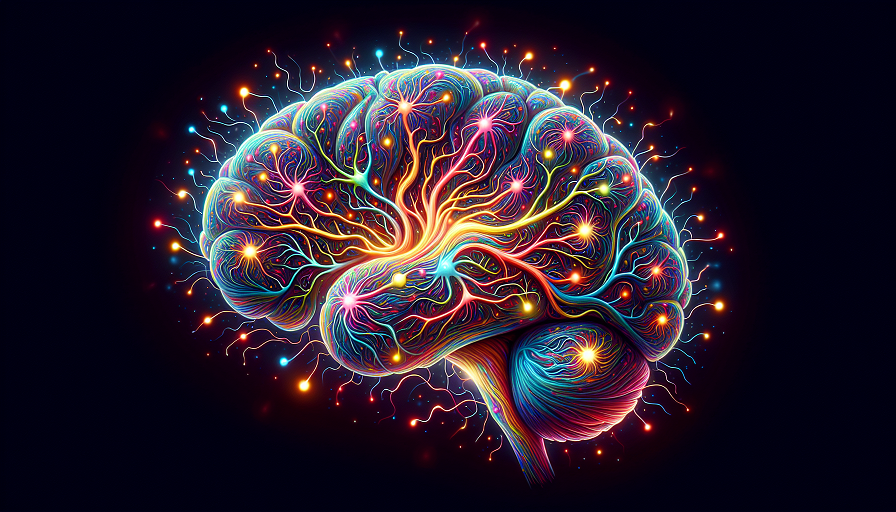
Neuroplasticity, the brain’s ability to adapt and reorganize itself by forming new neural connections, is a cornerstone of mental health. This remarkable capacity allows us to learn new skills, recover from emotional challenges, and even rewire harmful thought patterns. While neuroplasticity is often associated with learning and memory, its role in mental health is equally profound. From managing stress and anxiety to recovering from depression and trauma, understanding and leveraging neuroplasticity can transform how we approach emotional well-being.
Contents
What Is Neuroplasticity?
Neuroplasticity refers to the brain’s ability to change and adapt throughout life in response to experiences, environment, and internal factors. It involves the formation, strengthening, and pruning of neural connections, which shape our thoughts, emotions, and behaviors.
There are two primary forms of neuroplasticity:
- Structural Plasticity: Changes in the physical structure of the brain, such as the growth of new neurons (neurogenesis) or the strengthening of synaptic connections.
- Functional Plasticity: The brain’s ability to reassign functions from one area to another, often as a response to injury or significant life changes.
These processes allow us to adapt to new situations, overcome challenges, and continually grow, making neuroplasticity a vital component of mental health.
How Neuroplasticity Impacts Mental Health
Mental health is deeply intertwined with the brain’s ability to adapt and rewire itself. Here’s how neuroplasticity influences key aspects of emotional well-being:
Rewiring Negative Thought Patterns
Negative thought patterns, often seen in conditions like depression and anxiety, are the result of deeply ingrained neural pathways. Neuroplasticity allows these pathways to be reshaped, replacing harmful patterns with healthier, more constructive ones. Techniques like Cognitive Behavioral Therapy (CBT) leverage this principle by challenging and reframing negative beliefs.
Reducing the Impact of Trauma
Traumatic experiences can leave lasting imprints on the brain, but neuroplasticity provides a pathway for healing. Through therapies such as Eye Movement Desensitization and Reprocessing (EMDR) and exposure therapy, the brain can form new, less distressing associations with traumatic memories.
Managing Stress and Anxiety
Chronic stress and anxiety can weaken neural connections in areas responsible for emotional regulation, such as the prefrontal cortex, while overactivating the amygdala. Neuroplasticity enables the brain to rebuild these connections, improving resilience and emotional balance.
Enhancing Emotional Resilience
Neuroplasticity fosters the development of coping mechanisms and emotional resilience by creating and strengthening neural pathways associated with positive emotions and adaptive behaviors.
The Science Behind Neuroplasticity and Mental Health
Several mechanisms underpin the relationship between neuroplasticity and mental health. Understanding these processes sheds light on how the brain adapts and heals:
Brain-Derived Neurotrophic Factor (BDNF)
BDNF is a protein that promotes the growth and survival of neurons. Higher levels of BDNF are associated with improved mood, reduced anxiety, and greater resilience, making it a key player in mental health.
Neurogenesis in the Hippocampus
The hippocampus, a brain region involved in memory and emotion, is one of the few areas where neurogenesis occurs in adulthood. Increased neurogenesis has been linked to better emotional regulation and recovery from depression.
Synaptic Plasticity
Changes in the strength and efficiency of synaptic connections influence how we process emotions and respond to stress. Strengthening positive pathways and weakening negative ones is crucial for mental health.
Strategies to Harness Neuroplasticity for Mental Health
While neuroplasticity occurs naturally, certain practices can enhance its effects, supporting emotional well-being and recovery. Here are actionable strategies to boost neuroplasticity for better mental health:
Practice Mindfulness and Meditation
Mindfulness meditation reduces stress, enhances focus, and promotes positive neural changes. Studies show that regular meditation can increase gray matter in brain regions associated with emotional regulation.
Engage in Regular Exercise
Physical activity boosts BDNF levels, stimulates neurogenesis, and reduces symptoms of depression and anxiety. Aerobic exercises like running, swimming, and cycling are particularly effective.
Challenge Negative Thought Patterns
Therapies like CBT teach individuals to identify and reframe negative thoughts, leveraging neuroplasticity to replace harmful patterns with healthier ones.
Prioritize Quality Sleep
Sleep is essential for memory consolidation and neural repair. Poor sleep can impair neuroplasticity, so aim for 7-9 hours of quality sleep per night to support brain health.
Build Social Connections
Meaningful social interactions stimulate brain areas involved in empathy, communication, and emotional regulation, promoting neural growth and adaptability.
Explore Creative Outlets
Engaging in creative activities, such as art, music, or writing, activates neural pathways associated with problem-solving and emotional expression, fostering resilience.
Eat a Brain-Healthy Diet
Include foods rich in omega-3 fatty acids, antioxidants, and vitamins, such as fatty fish, berries, and leafy greens, to provide the nutrients needed for optimal neuroplasticity.
Real-Life Examples of Neuroplasticity in Mental Health
Stories of recovery and growth highlight the transformative power of neuroplasticity:
- Overcoming PTSD: Veterans recovering from PTSD have used therapies like EMDR to rewire their brains and reduce the emotional impact of traumatic memories.
- Beating Depression: Individuals with treatment-resistant depression have seen improvements through activities like regular exercise and mindfulness, which promote positive neural changes.
- Managing Anxiety: Techniques like deep breathing and exposure therapy help individuals reshape their responses to stressors, fostering a calmer, more balanced state of mind.
Neuroplasticity is a powerful tool for understanding and improving mental health. By reshaping neural pathways, it enables recovery from emotional challenges, the development of healthier thought patterns, and the cultivation of resilience. Whether you’re seeking to overcome anxiety, manage stress, or enhance emotional well-being, the science of neuroplasticity offers a pathway to growth and healing. By adopting practices that support neuroplasticity, you can unlock your brain’s potential and build a stronger foundation for lifelong mental health.

